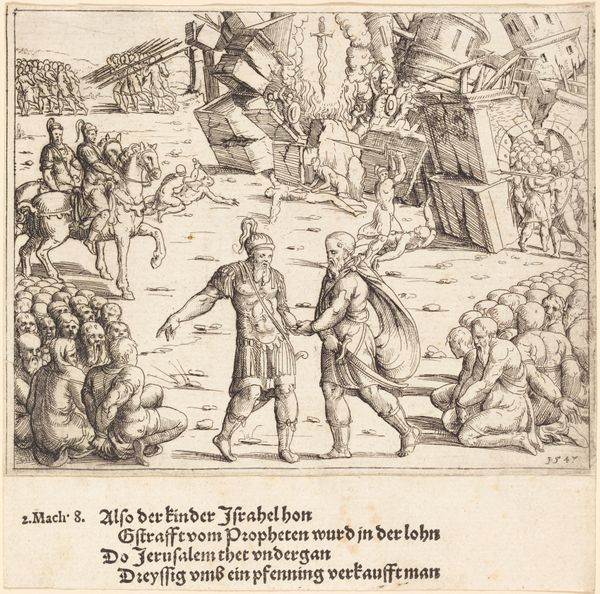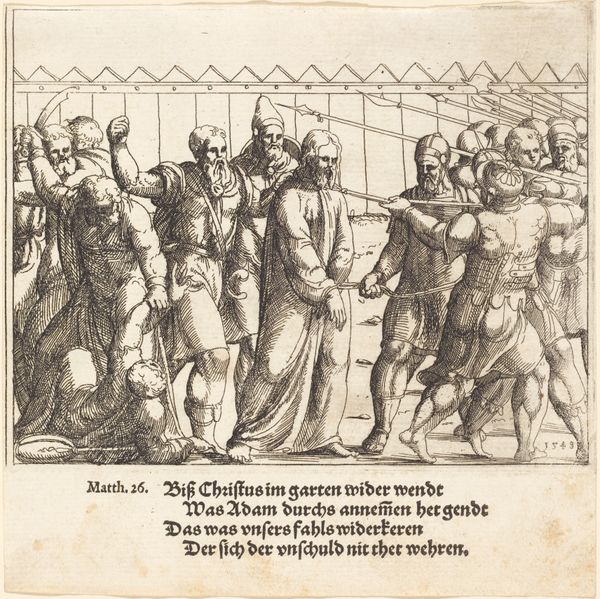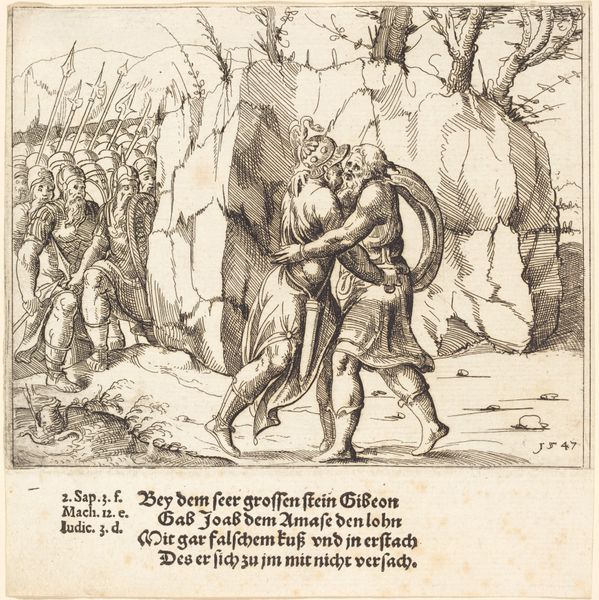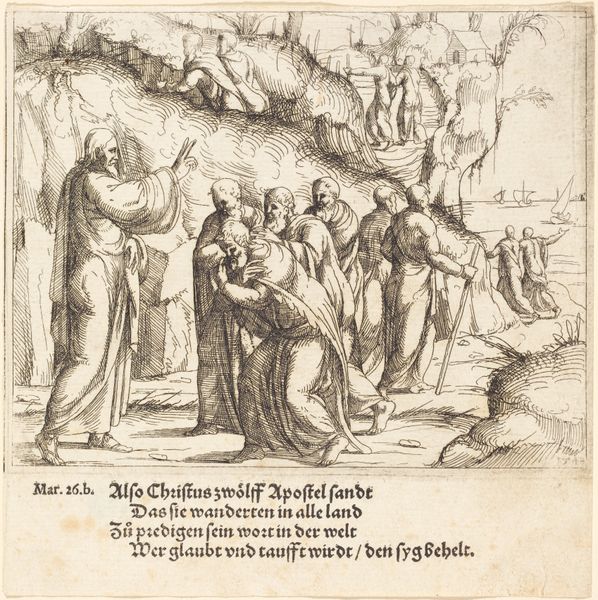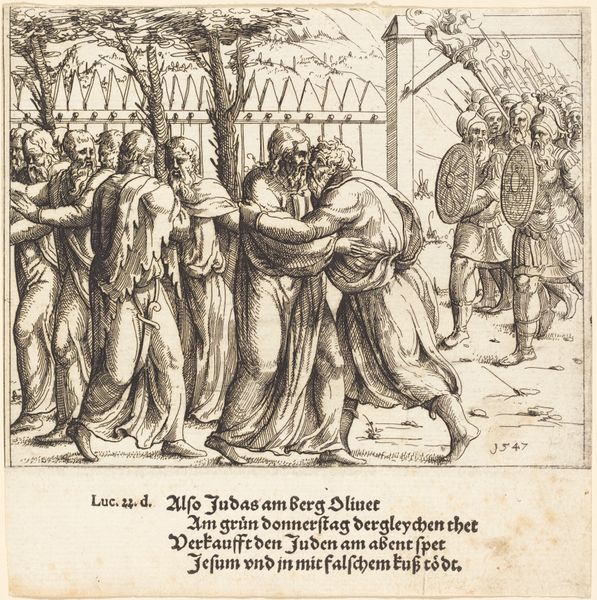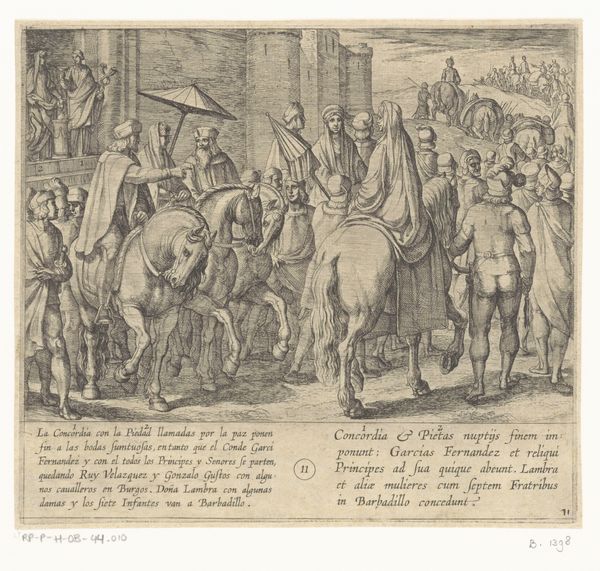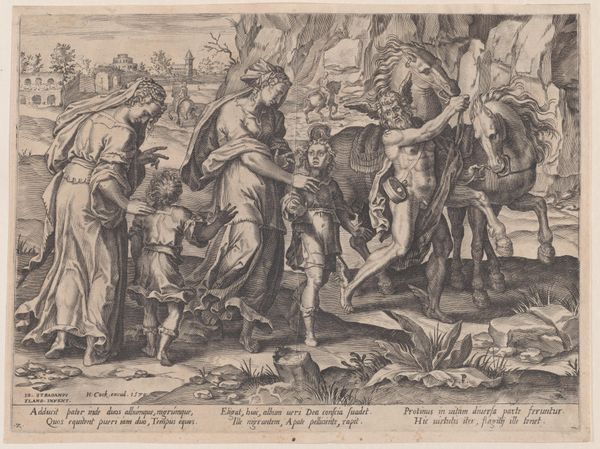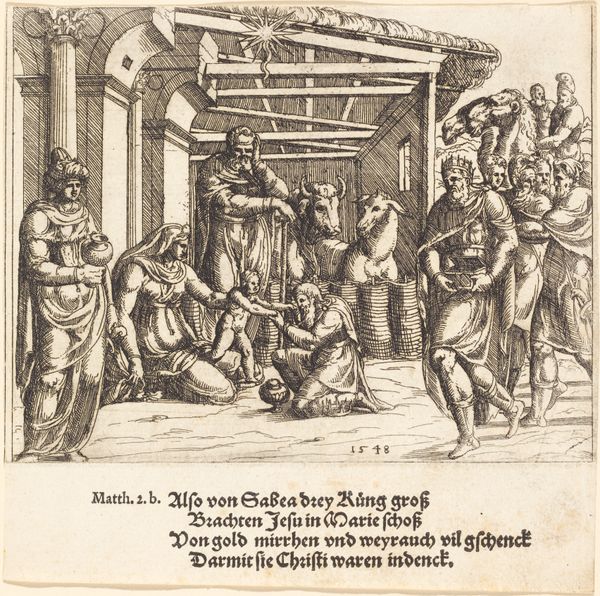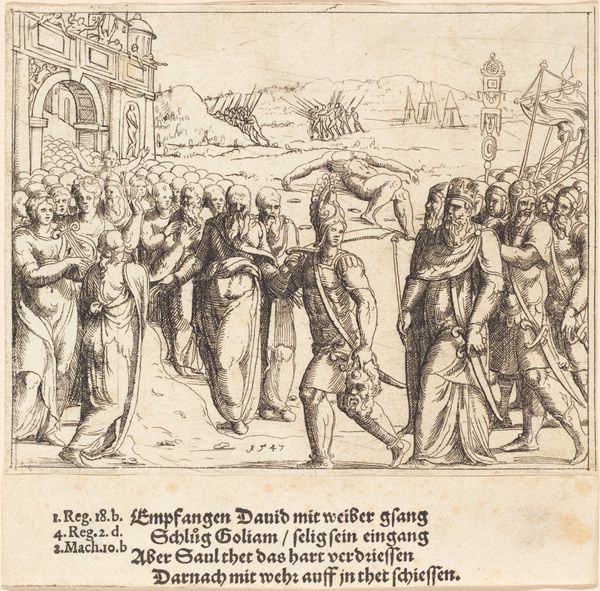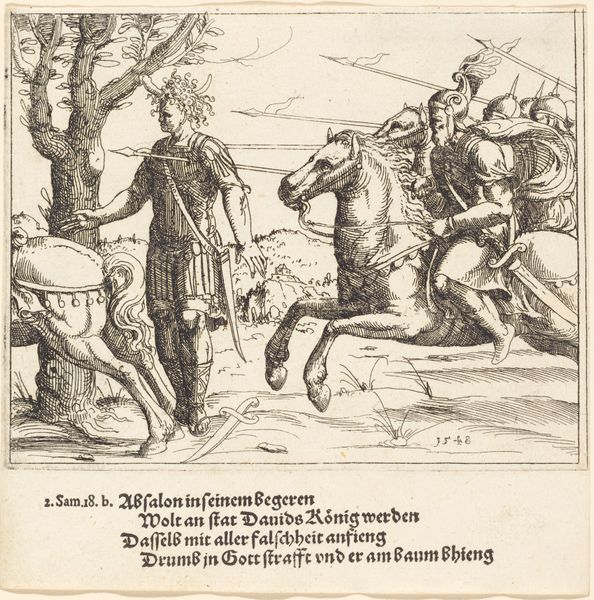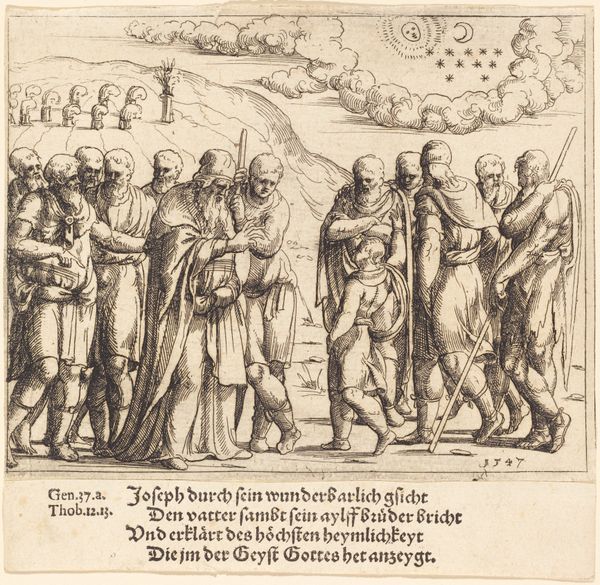
print, woodcut, engraving
#
narrative-art
# print
#
figuration
#
woodcut
#
line
#
history-painting
#
northern-renaissance
#
engraving
Copyright: National Gallery of Art: CC0 1.0
Augustin Hirschvogel created this engraving of “The Entry into Jerusalem” sometime in the mid-16th century. Engraving is an intaglio process, meaning that the image is incised into a metal plate, likely copper in this case. The artist would have used a tool called a burin to cut lines into the plate, creating a network of grooves that hold ink. The act of engraving demands precision. Each line requires careful planning, and the depth of the cut determines the darkness of the printed line. The texture is determined by these lines. In Hirschvogel's time, printmaking was closely tied to wider social issues. The printing press allowed for the rapid dissemination of ideas and images. Printmakers like Hirschvogel played a crucial role in shaping public opinion, creating a visual culture that reflected the era's religious, political, and social debates. Appreciating the labor and skill involved in engraving allows us to reconsider any assumptions of fine art over craft.
Comments
No comments
Be the first to comment and join the conversation on the ultimate creative platform.

